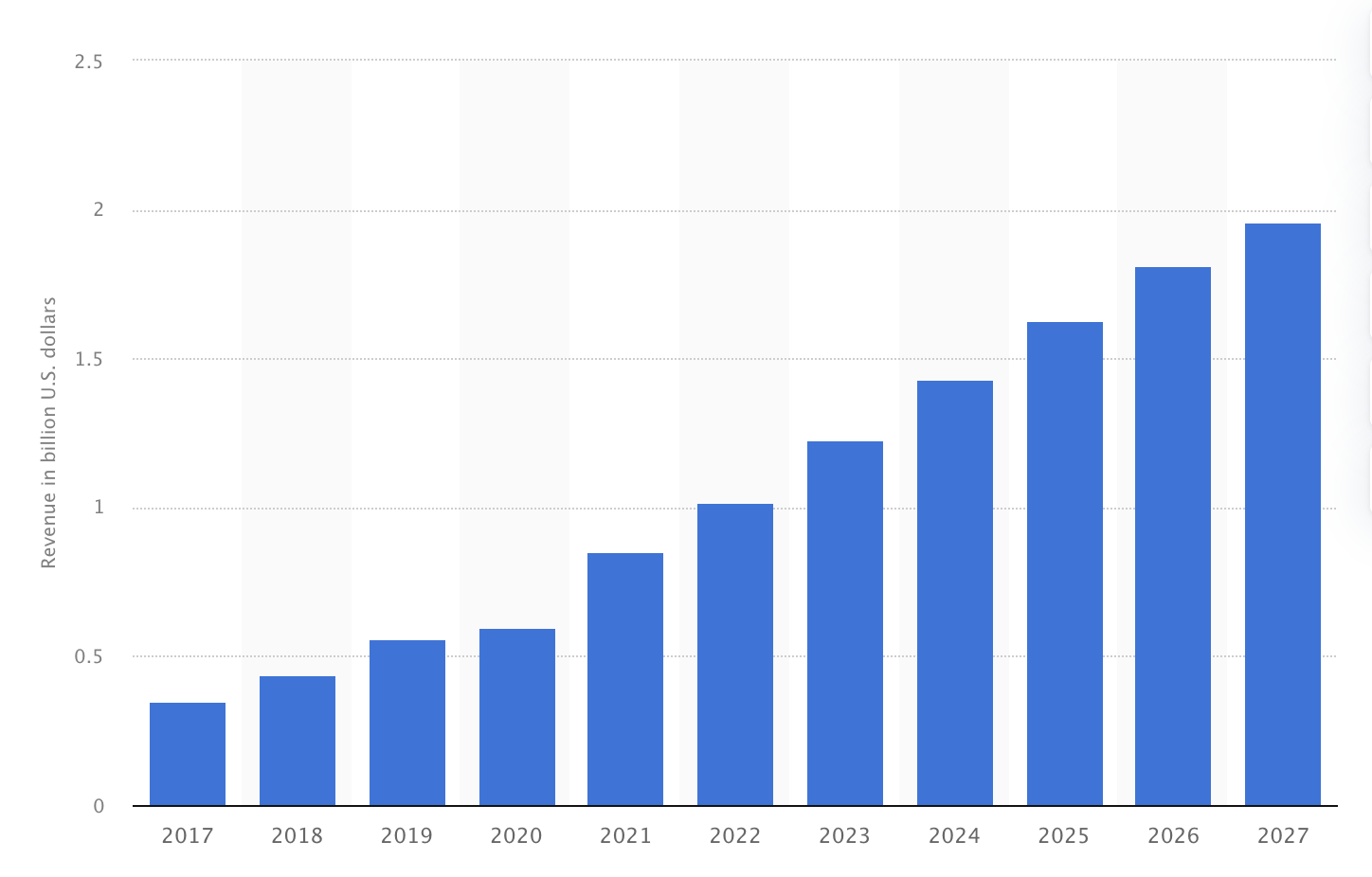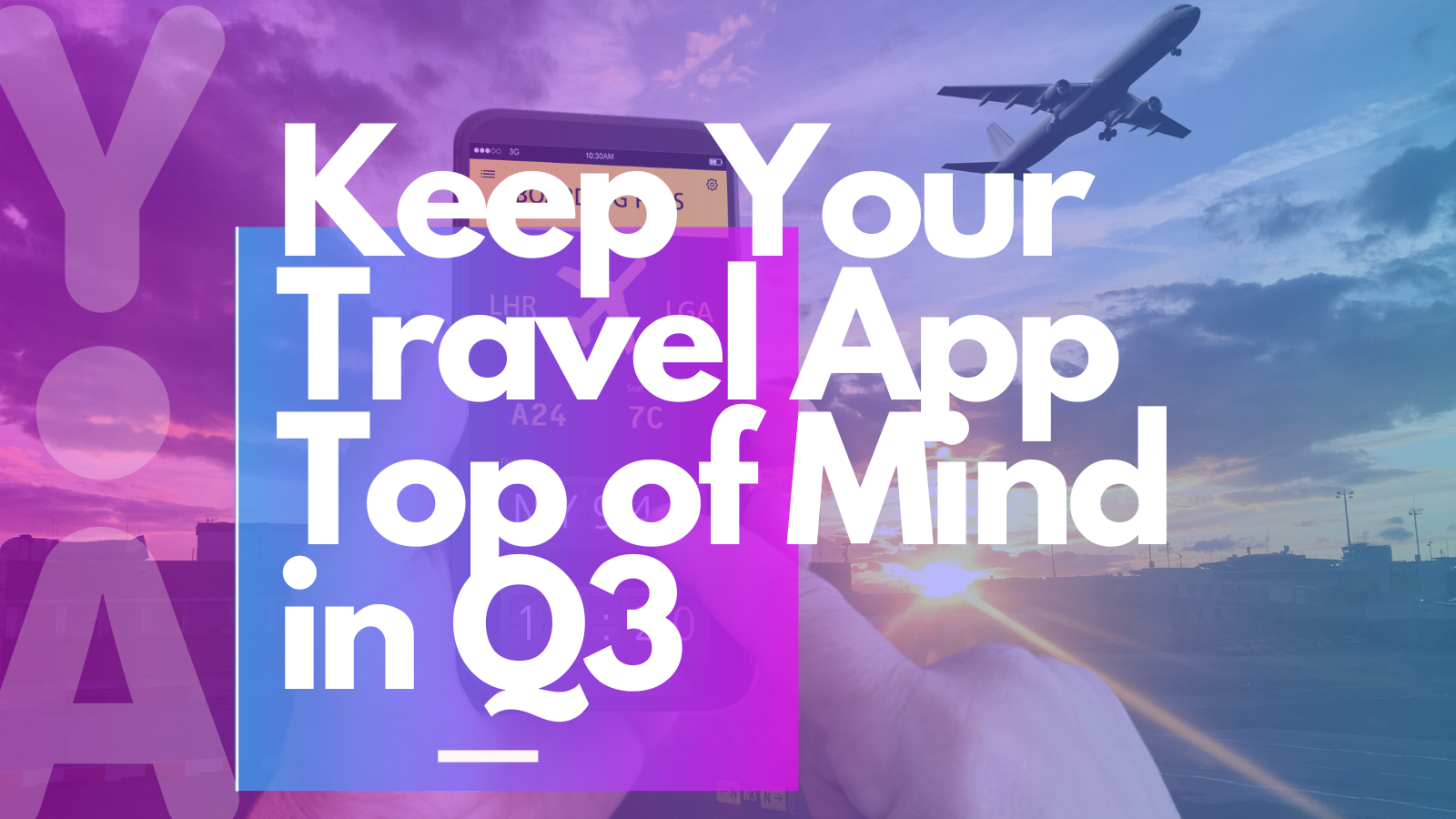The busiest travel time of the year — Q3 — is just around the corner. According to the UN World Tourism Organization (UNWTO), nearly half of all international travel happened in the third quarter, from July through September, in 2022. For travel apps, the mid to late summer months are a key time to retarget users and maximize long term revenue. Learn the top travel trends of the season and keep your travel app top of mind this Q3 with our tips below.
Mobile is the travel industry’s next frontier
Not only is mobile a growing segment of the travel industry — it’s a powerful one. According to Statista, the mobile segment drove more revenue than desktop for Booking Holdings. Mobile devices generated over nine billion U.S. dollars in 2022. On the other hand, desktop generated more revenue for Expedia and Airbnb last year. Also according to Statista, 15% of respondents to its Global Consumer Survey said they used mobile to pay for food and drinks in restaurants while only 9% said they used mobile devices to book travel. This data indicates that the mobile travel market still has much room to grow in the coming years.
Overall, global revenue from travel apps is set to increase by roughly 730 million U.S. dollars (+59.32%) from 2023 to 2027. In 2023, travel apps will generate 1.23 billion dollars.
Revenue of the travel apps market worldwide from 2018 to 2027 (in billion U.S. dollars)

|
Source: Statista
Keep your travel app top of mind in Q3 with retargeting
Why retarget existing users back to your travel app when you can acquire new ones? Because acquiring a new user can cost five times more than re-engaging an existing one. Furthermore, according to Clevertap, the average travel app loses 64% of users after just 30 days. This number spikes to 76% after 60 days, and 82% by 90 days. What’s more, increasing customer retention by just 5% can increase profits by up to 25-95%.
Here are seven ways you can use retargeting to drive value for your travel app in Q3 2023.
Promote price drops and deals to respond to consumer price anxiety
With inflation and high interest rates driving up costs, wallets and travel budgets are tighter than ever. In fact, according to travel booking app, Hopper, users checked travel prices 33% more in 2022 compared to pre-pandemic 2019 levels. This reflects growing price anxiety among consumers as the economy fluctuates. Despite this, 54% of users plan to take more trips this year than in previous years and 84% plan to spend more on travel than in previous years.
With price anxiety present in consumers’ minds in 2023, highlight price drops, deals and discounts in your re-engagement ads.
Retarget users 5 weeks before their desired departure date
According to Hopper, on average, travelers make their first search for a trip 5 weeks before departure. This is slightly shorter than pre-pandemic search times, when the average traveler made their first search 7 weeks prior to their desired departure date.
With this timing in mind, segment your audience based on travel date search history. Then, launch retargeted ads around 5 weeks prior to their desired departure date. As both domestic and international travel planning has become increasingly last-minute, keep retargeting users with ads up to 1-2 weeks prior to their trip. These ads could highlight additional deals, add-ons or upgrades.
Advertise same day hotel deals
According to Hopper, more than half of all hotel bookings are made last minute. In fact, an average 55% of bookings made via the Hopper app were for a same-day check-in. This means same-day hotel bookings increased by 7.5% from 2021 to 2022. What’s more, in just the first three months of 2023, 63% of hotel bookings were made the same day as check-in.
With this trend in mind, promoting same-day hotel booking deals can be a smart way to retarget travelers. Focus on launching retargeted ads on the highest check-in days: Thursdays, Fridays and Saturdays.
Highlight trending destinations
To launch retargeted ads that entice users to come back to your travel app, highlight desired, trending destinations. According to Hopper, more travelers are adventuring to international destinations this year. Europe remains the highest demand international region followed by Asia. In terms of major cities that are most searched, London, Tokyo and Paris top the list. When it comes to domestic travel, major U.S. cities remain the most popular destinations. This includes New York City, Orlando and Las Vegas.
With these cities in mind, use assets in your ad creatives that highlight these popular destinations.
Re-engage with trip add-on options
According to the Atmosphere Research Group, travelers tend to purchase ancillary products and add-ons between the booking and check-in period. This is in contrast to buying add-ons at the time of their flight booking — which more than 50% of travelers do but only for the choice of their assigned seat. Instead, most travelers purchase additional items for their travel plans after they’ve booked their flight. This includes checked luggage, priority boarding and rental car and hotel booking links. This data reflects the opportunity travel apps have to follow up with customers with post-booking offers. Segment your audience for customers who have recently booked travel and retarget them with ads for add-ons in the weeks leading up to their departure.
Takeaways
Mobile is a growing and powerful segment of the travel industry, with mobile devices generating significant revenue for leading online travel agencies (OTAs). Travel apps still have room to increase their revenue by retargeting their most active customers during the busy Q3 travel months (July to September).
- Price anxiety is a concern for consumers, so highlighting price drops, deals, and discounts in retargeting campaigns can be effective.
- Travelers typically start searching for trips around 5 weeks before their desired departure date, so launching retargeted ads at this time can be beneficial. Keep retargeting users with ads up to 1-2 weeks prior to their trip.
- Same-day hotel bookings are increasing. Promoting same-day hotel booking deals can be a successful retargeting strategy, particularly on high check-in days (Thursday through Saturday).
- Highlight trending destinations in ad creatives to attract users back to your travel app.
- Travelers tend to purchase ancillary products and add-ons between the booking and check-in period, rather than at the time of flight booking. Travel apps should follow up with customers after booking and offer add-ons during the weeks leading up to their departure.
Keep your travel app top of mind in Q3
From granular audience segmentation to ROI-optimized retargeting campaigns, our team of mobile marketing experts can help your travel app drive more revenue in Q3. Reach out to us to talk about your performance strategy.




